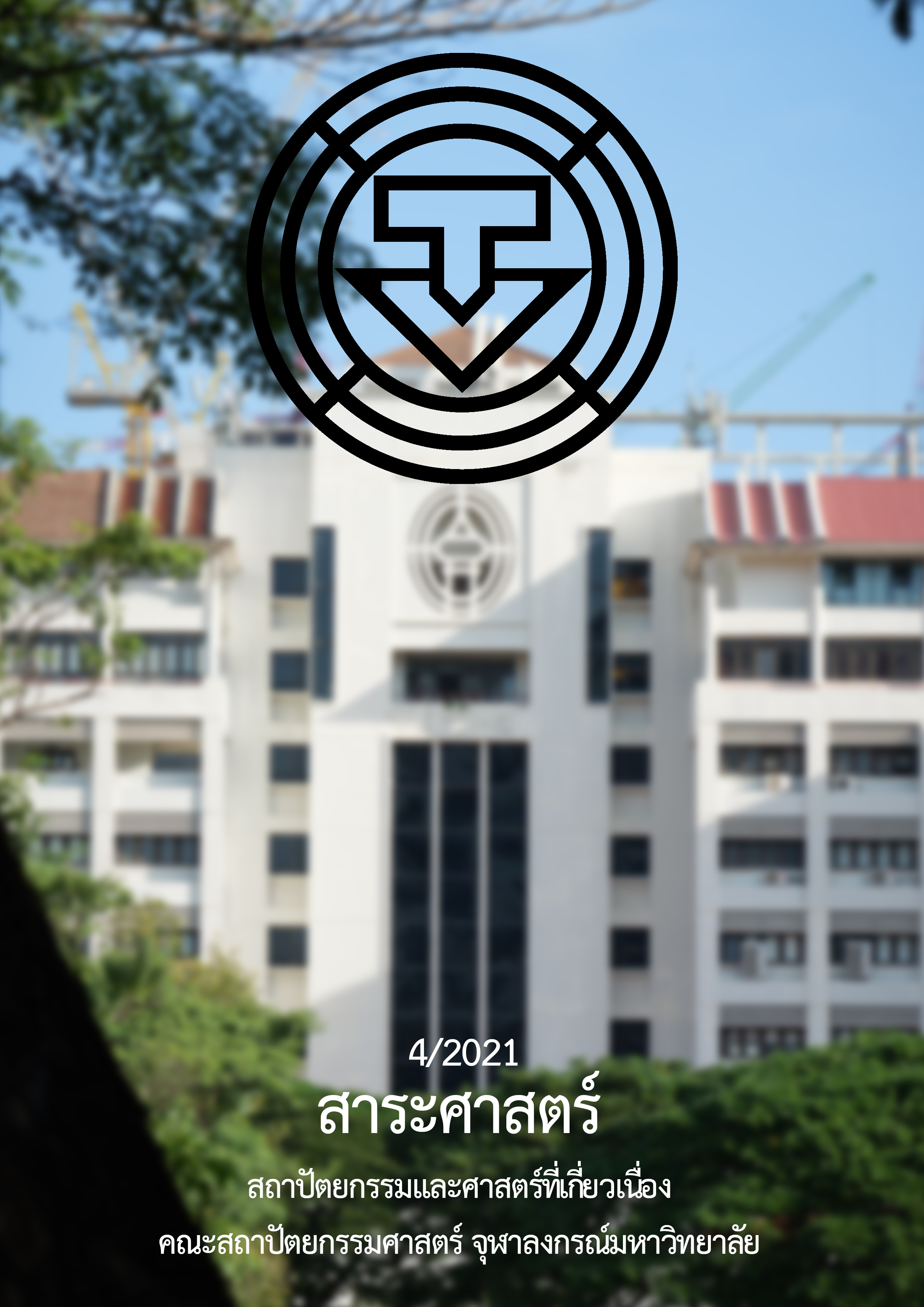Guidelines Improvement of Housing and Outdoor Space for the Elderly Living in Muslim Community in Inner the Bangkok Urban Area Case Study Ban Krua Commnity
Main Article Content
Abstract
From the situation of changing population structure in 2021, Thailand will be a completely aging society. There is a Muslim population in Bangkok about 4.6 percent and Muslim communities have located in inner the Bangkok urban area is an old community, Ban krua community is chosen to study. Ban krua community is the first Muslim community in Phra Nakhon side and It is a large community. In present, the community is divided into 3 communities such as North Ban krua community, West Ban krua community, and South Ban krua community. All communities have co-tradition. As well as, there is many elderly population increases continuously.
The question of this research article was how to improvement of housing and outdoor space for the elderly living in Muslim communities in inner the Bangkok urban area. The purposes of this study were studying on social characteristics, economy, health, living condition, outdoor space of community, analysis daily activities and study on using space problem, in order to, present guideline improvement of housing and outdoor space for the elderly living according to Age-friendly city concept.
According to collected data by questionnaire interview and survey on housing and outdoor space in the study area. The study found that the majority housing of the elderly living in Muslim communities are 2 storey detached houses wooden structure and has a land area of less than 20 square wa. They regularly living in ground floor pray in multipurpose rooms and most of them have an ablution in baht rooms. Problems and obstacles of the elders were terrace kitchen and bathroom because materials were unsuitable for use. Furthermore, problems and obstacles of outdoor spaces were footpaths, roads, and ramp in the garden. Because of unsuitable using space, rough concrete floor, slippery material and without walkway handrail. This research will present an improvement concept, for example, offering suitable housing for the elderly living by universal design concept
Article Details
References
กฎกระทรวงกำหนดสิ่งอำนวยความสะดวกในอาคารสำหรับผู้พิการหรือทุพพลภาพ และคนชรา ฉบับที่ 2 พ.ศ. 2564. (2564, 4 มีนาคม). เล่ม 138 ตอนที่ 16 ก. หน้า 19-29.
ไตรรัตน์ จารุทัศน์, กิตติอร ชาลปิติ, จิราพร เกศพิชญวัฒนา และ สุภาวดี ชัยพุฒิ. (2548). มาตรฐานขั้นต่ำสำหรับที่พักอาศัย และสภาพแวดล้อมของผู้สูงอายุ: รายงานวิจัยฉบับสมบูรณ์. กรุงเทพมหานคร: สำนักงานสนับสนุนการวิจัย (สกว.).
ไตรรัตน์ จารุทัศน์. (2551). การออกแบบเพื่อทุกคน (Universal Design). กรุงเทพฯ: สำนักพิมพ์แห่งจุฬาลงกรณ์มหาวิทยาลัย.
ภาวดี อังศุสิงห์. (2559). การออกแบบสวนที่พักอาศัยสำหรับผู้สูงอายุสมองเสื่อม. กรุงเทพฯ: สำนักพิมพ์แห่งจุฬาลงกรณ์มหาวิทยาลัย.
รายงานข้อมูลผู้สูงอายุของกรุงเทพมหานครจากฐานประชากรในระบบทะเบียนราฎร. (2561). สืบค้นจาก http://www.Bangkok.go.th
ลภา เฉลยจรรยา. (2560). แนวทางการออกแบบปรับปรุง ที่อยู่อาศัย อาคาร และพื้นที่ภายนอกสำหรับผู้สูงอายุ ในเขตพื้นที่ชานเมือง: กรณีศึกษา พื้นที่เขตเทศบาลเมืองบึงยี่โถ จังหวัดปทุมธานี. (วิทยานิพนธ์ปริญญามหาบัณฑิต, จุฬาลงกรณ์มหาวิทยาลัย).
เวณิกา ธูปพลทัพ. (2560). แนวทางการออกแบบปรับปรุงที่อยู่อาศัย อาคาร และพื้นที่ภายนอกสําหรับผู้สูงอายุเขตชุมชนเมืองในพื้นที่สํานักงานทรัพย์สินส่วนพระมหากษัตริย์ กรณีศึกษา ชุมชนทรัพย์สินใหม่ ชุมชนทรัพย์สินเก่า และชุมชนคลองพลับพลา เขตวังทองหลาง กรุงเทพมหานคร. (วิทยานิพนธ์ปริญญามหาบัณฑิต, จุฬาลงกรณ์มหาวิทยาลัย).
สำนักงานสถิติแห่งชาติ. (2553). สำมะโนประชากรและเคหะ พ.ศ.2513, 2523, 2533, 2543 และ 2553. กรุงเทพฯ: สำนักงานสถิติแห่งชาติ.
สำนักสถิติแห่งชาติ (Nnited Nation : NN). (2557). ข้อมูลสถิติประชากร. กรุงเทพฯ: สำนักงานสถิติแห่งชาติ.
เรืองศักดิ์ ดำริห์เลิศ. (2546). ประวัติศาสตร์บ้านครัวและการต่อต้านทางด่วนซีดีโรดของชาวชุมชน. กรุงเทพฯ: อรุณการพิมพ์.
Burton, Elizabeth & Mitchell, Lynne. (2006). Inclusive urban design: Street for life. Oxford: Architectural Press.
World Health Organization [WHO]. (2007). Global age-friendly cities: A guide. Paris: World Health Organization.
World Health Organization [WHO]. (2015). World report on ageing and health. [n.p.]: World Health Organization.


